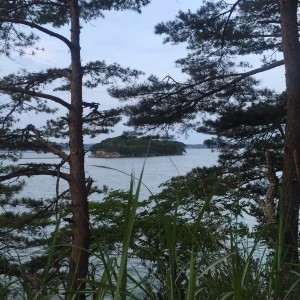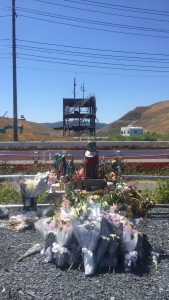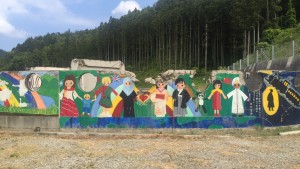Tōhoku
June 12, 2016
North-eastern Japan was very different from Tokyo. From the larger roads to the mountainous terrain, the Tōhoku region gave me another reason to fall in love with this country.
Our experience up north was mainly divided into two sections of study: nuclear disaster and natural disaster. In Fukushima prefecture, we interviewed many individuals that were directly affected by the Dai-Ichi explosion in March of 2011. Many of these people were moved into temporary housing because of the earthquake’s damage and/or dangerous radiation levels in their communities. The other majority of people we interviewed were concerned mothers that changed their family’s lifestyle to accommodate for a safe environment for their children. Because of this, many families were split up by their mother’s precautions and their father’s disagreement with the extremities of these safety precautions. For instance, some mothers decided to keep their children indoors and not allow them to play outside and others moved from dangerous cities entirely, leaving their husbands behind to work. Many couples did not agree on the potential for danger with high levels of radiation in the atmosphere, and continue on living separately. Because of this, many mothers we interviewed were afraid to communicate their fears of radiation poisoning and danger in their area with the larger public, resulting in small groups of mothers spread across the Fukushima prefecture. Many mothers met without their husbands knowing simply to avoid conflict.
As we trekked further north, we saw the earthquake and tsunami damage closer to the epicenter of the 3.11 disaster. This was one of the hardest parts of the trip. We visited the Ogawa Elementary school where almost all of the people on the roof of the school went missing or passed away as a result of the tsunami’s height. Some escaped to higher grounds, but others did not. This experience really emphasized the intensity of the tsunami and how large the surge was because even though these people were prepared for disaster to strike, they could not have been prepared for 3.11. Seeing the elementary school and other devastated areas like the Disaster Response Center in Minamisanriku where many deaths happened as well made me wonder whether disaster preparedness is really possible. Yes, there are basic things everyone must know to do such as store food and water and extra clothes, but the intensity of disasters cannot be predicted as much as we want to believe they can. The term “disaster preparedness” is actually contradictory in itself. Must we redefine disaster preparedness? Can we even be really prepared for disasters like the “big ones” scientists talk about all the time?

A view from Fukuurajima

The disaster response building in Minamisanriku and a community-built memorial

A mural remaining from the elementary school
Leave a Reply